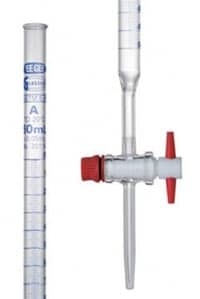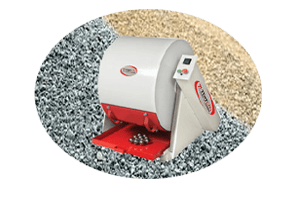

|
TMG-0119 |
Burette 25 ml |
|
TMG-0119 |
Burette 50 ml |
|
TMG-0119 |
Burette 25 ml |
|
TMG-0119 |
Burette 50 ml |
Graduated glass tubes that are closed at one end and have a valve at the other end are called burets. The burette, which is preferred for titration processes, serves as a kind of pipette. Thanks to the properties of the liquid passing through the pipette, it enables the separation of liquids. Burettes are among the frequently used elements in laboratories. One of the important equipment of chemistry laboratories is burette. Burettes are available in different sizes and types.
What are the Burette Types?
A burette is a long, graduated, glass tube marked with measurements and used in chemistry. A burette functions as a tool for measuring both liquids and gases. A volumetric burette is a long glass tube, while a piston burette resembles a syringe.
Usage Purposes of Burettes:
Both burettes and pipettes measure liquid volume; however, the pipette is smaller, measures only a single volume, and is generally used to transfer a specific volume of liquid.
Burette Usage Areas:
What is a burette used for? Burettes are often used in chemical titrations. Chemical titration is a procedure used to find the concentration of a chemical solution. There are several types of titrations that can be performed, including acid/base titrations, reduction/oxidation titrations, and precipitation titrations. When using a burette to perform titration, the samples used must be liquid. Acid/base titrations are a common titration performed in the chemistry laboratory.
Acid/base titrations are used in many industries, including:
Food industry: Testing the acidity level of various liquids such as soda, juice or vinegar.
Cosmetics industry: Ensuring that appropriate concentrations of ingredients are used in cosmetics for customer safety.
Pharmaceutical industry: Verification of ingredient concentrations of pharmaceuticals such as aspirin.
Titrations are also used in industries such as meteorology, biofuel production and medical diagnostics.
Parts of a Burette:
A burette consists of a long, graduated tube, usually glass, marked with volume measurements. At the bottom of the tube is a stopcock or valve used to stop and start the flow of liquid through the burette. The small, tapered end of the burette is the capillary tube. Burettes are often clamped to a stand to keep them stable during use.
The volume markings on the side of the burette are called gradations. They measure the volume of liquid contained in the burette in milliliters. Most burettes hold 50 milliliters of liquid, and the scale used is usually 0.1 milliliter.
History of Burettes:
A burette description should include a brief history. The first burettes were developed in France in the late 18th century, but they were more like graduated cylinders. Improvements to the design were made by Joseph Louis Gay-Lussac in 1824, who first used the word burette. Karl Friedrich Mohr, a German chemist, redesigned the burette by adding a clamp to hold it steady and a tip for easier handling and more precise measurements.
P.Code |
Desctription |
Dimensions |
Weight |
|---|---|---|---|
TMG-0119 |
Burette 25 ml |
50x50x820 mm |
0.25 kg |
TMG-0120 |
Burette 50 ml |
50x50x820 mm |
0.3 kg |